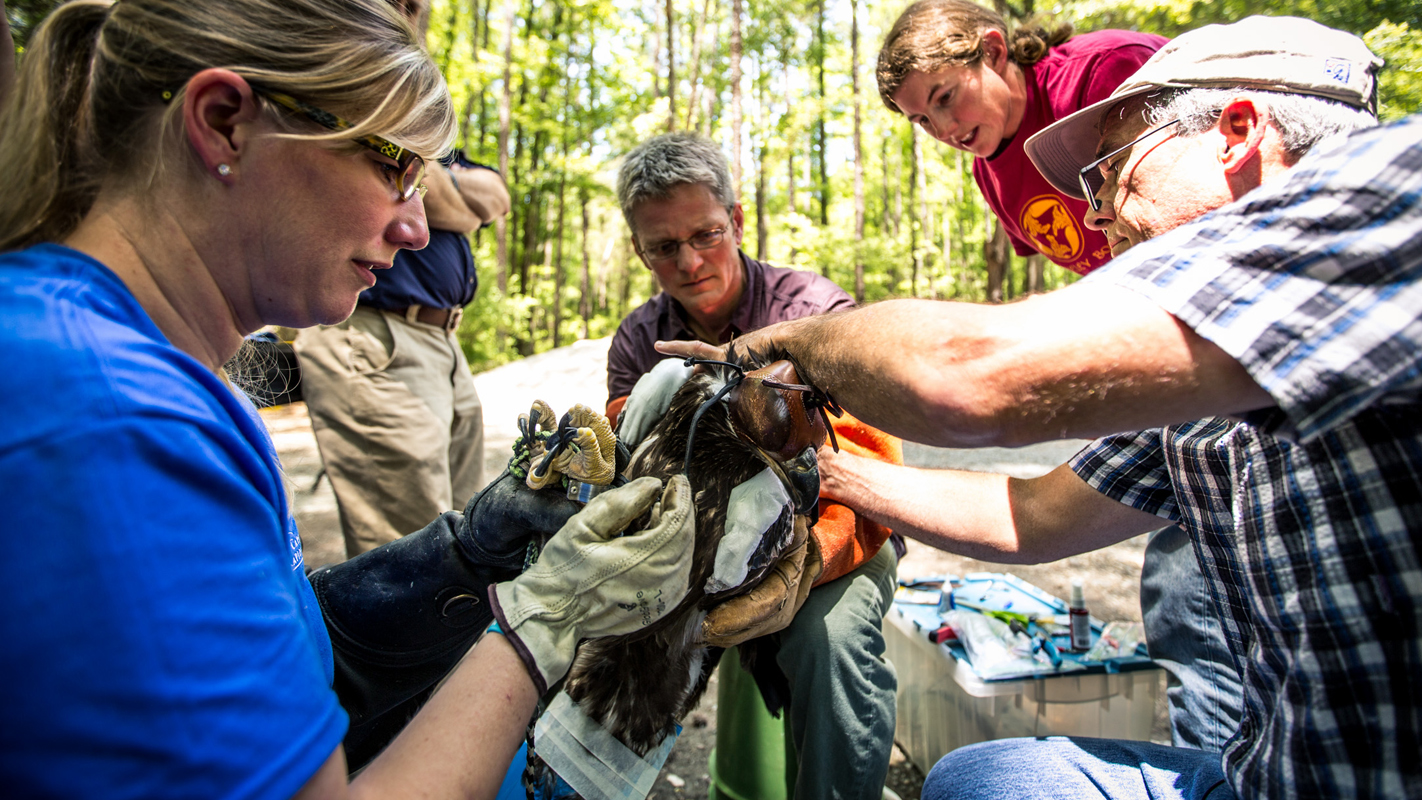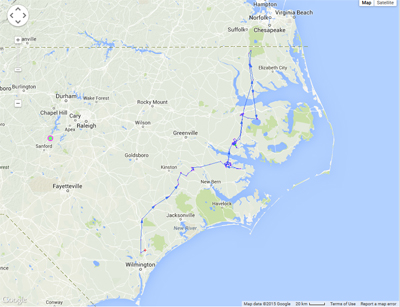Tracking Bald Eagles in Coastal North Carolina

Few animals capture the public imagination like the bald eagle. But despite their status as a national emblem, we still have a lot to learn about their behavior in the wild. Now NC State researchers are part of a team that’s using state-of-the-art GPS transmitters and the Movebank animal tracking database to study bald eagle movements in coastal North Carolina.

The work is being led by NC State faculty Ted Simons, who is part of the NC Cooperative Fish and Wildlife Research Unit, and Roland Kays, who has a joint appointment at the NC Museum of Natural Sciences.
The current project began with an immature bald eagle (Haliaeetus leucocephalus), which was rescued by Dr. Joni Gnyp of the Cape Fear Raptor Center in 2014. The two-year-old female eagle, nicknamed “Yangchen,” was weak and emaciated when recovered – and subsequent analyses by Shea Tuberty at Appalachian State University indicated relatively high levels of zinc and lead in the bird’s blood.
After being nursed back to health, Yangchen was fitted with a 48-gram solar-powered GPS transmitter and released in early January 2015.
Since her release, Yangchen has moved between Wilmington and Albemarle Sound, focusing her activity near Bath and Aurora, North Carolina, where she is making extensive use of reclaimed phosphate pits and catfish ponds in the area.
Recent maps of the bird’s movements are available to the public and updated four times a day by Movebank. The scientists are hoping to track the immature bird to follow migratory movements, pair formation, and nesting behavior over the next several years.
- Categories:


